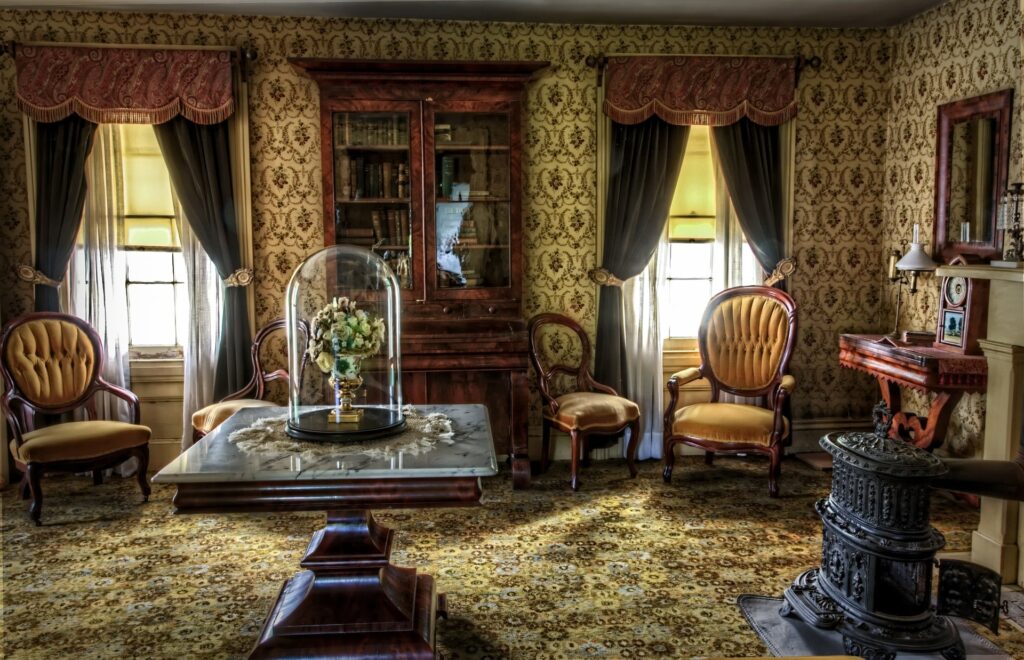Are considered as antique furniture, those whose manufacture dates back at least a century. These are highly sought after antiques today. However, the absence of reference prices, except for renowned cabinetmakers, makes it quite difficult to estimate their market value. In this article, we share with you the ideal approach, as well as practical advice for estimate a piece of furniture old.
Summary
Detect counterfeits: first step to estimate an antique piece of furniture
Before even establishing the price at which a piece of furniture can be sold, it is essential to make sure that it is truly old. Indeed, there are a multitude of counterfeits on the market. To cross them off your list, a visual examination may be enough. The latter must consist of mainly looking for:
- Non-meticulous finishes;
- Artificially dug wormholes;
- A mixture of styles from different periods;
- Recent sculptures.
If you haven’t detected any of these signs of counterfeiting, you can move on to the estimate proper.
How to estimate an old piece of furniture yourself?
Whether with a view to selling or buying, it is possible to evaluate the price of a piece of furniture yourself. For this, the criteria to be taken into account in this assessment are as follows:
The stamp
The stamp is a form of signature whose carpenters or cabinetmakers mark their works. It plays an essential role in the authentication of a meubke. Note that the majority of the stamped furniture comes from the 18th century.and century. Moreover, the furniture of 1637 to 1790 must be signed.
The location of the stamp is not fixed. This can be placed on:
- The edge of a drawer;
- The top of a chest of drawers;
- The amount of a chest of drawers, etc.
To verify the authenticity of the stamp, it is strongly recommended to compare it to a standard (reference signature). Once the authentication has been carried out, you should know that the more the manufacturer is renowned and sought after, the more the furniture bearing his stamp has value.
Signs of wear
The ends of an old piece of furniture must be marked with traces of wear. These appear due to the exposure of these parts to friction. Also, the boards of the bottom, the ceiling or the floor normally present irregular saw marks. On the other hand, on a more recent antique piece of furniture, the traces of a mechanical saw are regular.
Finally, wormholes may be present on an old piece of furniture depending on the type of wood used. In principle, an authentic wormhole is irregular.

The relief sculptures
This parameter allows to have a more or less precise idea of seniority of a piece of furniture. Relief sculpture refers to a sculpture containing irregularities. Also described as oily, it is explained by the fact that carpenters and cabinetmakers worked by hand.
Because of this manual work, it is highly unlikely that the carving will be perfectly even, even when the craftsman is extremely skilled. The too regular sculptures are therefore more likely to be recent. In this case, the selling price of the furniture is lower.
The quality of the patina of the wood
Patina is a technique aimed at raising the material effect furniture. For this, she highlights on the wood, its veins, its irregularities, as well as its wear. On an old piece of furniture, the patina must be homogeneous and dark.
Assembly technique
Some key assembly points are unique to antique furniture.
Ankles
Their presence on the body or on the doors of a piece of furniture is often indicative of very old production.
The drawers
If the piece of furniture is very old, its drawers can be assembled in dovetails. In this case, there must not be more than 3 dovetails per drawer.
Glue
The most recent “old” pieces of furniture are often glued and then reinforced with brackets and screws. This is for example the case of those of the XIXand century.
The traces of restoration
Repair marks can increase or decrease the value of an antique piece of furniture depending on their nature.
Devaluing restorations
When they are too large, the repair marks tend to lower the price of the work. Moreover, a counterfeiter can easily hide behind these traces. The furniture to cornice are a perfect example.
Valuable repairs
These are often minimal traces. It is unlikely that they are linked to a forger. In some cases, they help to increase the value of the furniture.
Estimate an old piece of furniture yourself, is it sufficient ?
Unless you are knowledgeable on the subject of antique furniture, your analysis may lack precision. It is indeed preferable to use the services of an expert in the field. This type of specialist is trained to tell the difference between a genuine and a copy.
It can also provide you with more precise information on the period of manufacture of the piece of furniture, its style, its history, etc. By having these details, you will naturally be more credible if you decide to sell your furniture yourself. To this end, he can inform you about market trends to allow you to more accurately estimate your antique furniture.
Read also: Painting a piece of furniture: how to proceed?





